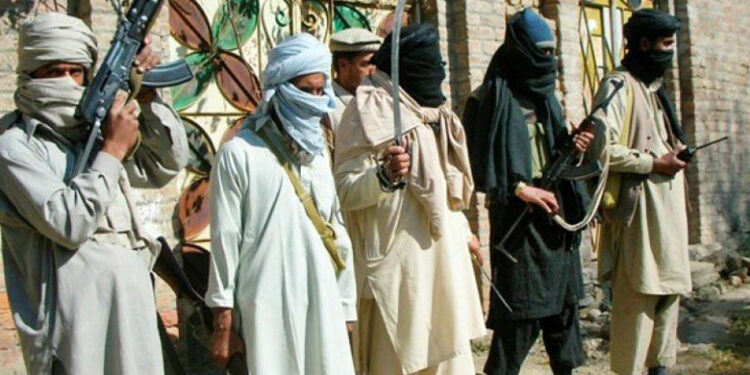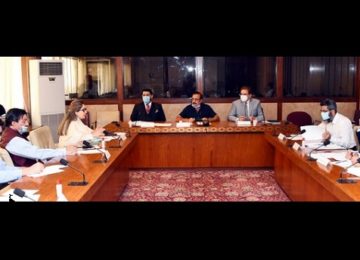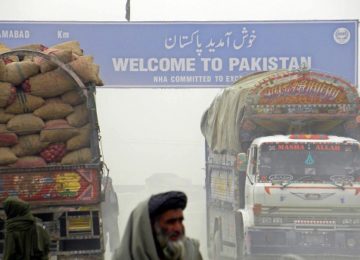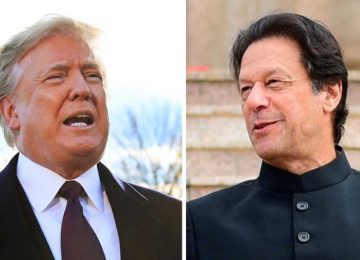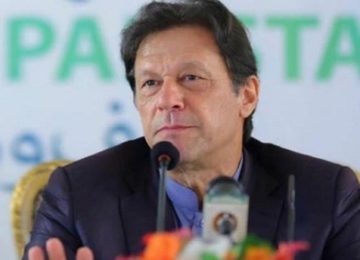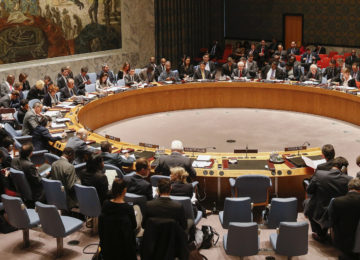Pakistan must re-evaluate its strategies and investments on all counter-terrorism operations as they have become highly questionable after the resurgence of the Taliban in parts of the country
A large-scale military operation Zarb-e-Azb was called off in 2017 once the army’s top brass found results of the operation satisfactory enough for its discontinuation eight years after it was launched. Nearly 3,500 militants were reported dead while twice of them had fled across the country for two reasons – find shelter and join Afghan Taliban to provide strategic support in their pursuit to take over the country as the US had already started talking of withdrawing its forces from Afghanistan in 2014.
The Zarb-e-Azb operation undoubtedly turned out to be a blessing for the Afghan Taliban whose strength multiplied by several thousand militants once these Pakistani militants joined them.
Pakistan also benefited from Zarb-e-Azb operation as it brought down militancy from 7,300 fatalities in 2014 to 601 in 2020. To consolidate the gains of the Zarb-e-Azb operation and purging the country from the remnants of the militants, Pakistan took two major steps – launching of the Radd-ul-Fasad operation and fencing its porous border with Afghanistan to avert the cross-border attacks by the Afghanistan-based Pakistani militant groups, Tehreek-e-Taliban Pakistan (TTP) the most prominent among them.
As normalcy began to return to Pakistan, the situation in Afghanistan took a new turn soon after a peace agreement between the US and Afghan Taliban was signed on February 29, 2020, that laid out a plan for the withdrawal of the US combat forces by May 1, 2021 which was later extended to August the same year. Soon after the withdrawal of the US forces from Afghanistan, the Afghan Taliban stormed the capital of the country, compelling the sitting President Ashraf Ghani to flee away. The first thing the Afghan Taliban did after coming into power was to release all those prisoners that were detained by the former government on charges of terrorism. Some 2,300 of them belonged to the TTP. A year before having these prisoners into its folds, the TTP had managed to get its splinter groups, Jamat-ul-Ahrar (JuA), Lashkar-e-Jhangvi and Hizb-ul-Ahrar (HuA) rejoin the TTP in Afghanistan with one objective – target security forces of Pakistan.
The year the Afghan Taliban came into power, the number of fatalities from violence rose to 850 from 601 in the previous year. The TTP alone claimed responsibility for 11 terror attacks and some unidentified Afghan-based militants carried out almost the same number of attacks.
Coincidently, the year the Afghan Taliban came into power, the number of fatalities from violence rose to 850 from 601 in the previous year. The TTP alone claimed responsibility for 11 terror attacks and some unidentified Afghan-based militants carried out almost the same number of attacks. The number of security personnel who lost their lives in 2021 went up to 271 as compared to 163 in 2020. A pledge made by the TTP and its splinter groups a year back was being followed by them as earnestly as they could.
The consistent targeting of security personnel by the Afghan-based militants and cross-border attacks by them led the Pakistan government to carryout negotiations with the TTP leadership with the backing of the Afghan Taliban. On November 8, 2021, a press report announced: “… the interim Afghan government-backed talks between the ruling Pakistan Tehreek-e-Insaf (PTI) and the banned Tehreek-e-Taliban Pakistan (TTP) had formally begun with both sides agreeing to a complete ceasefire.”
It was a kind of admission by the government that the TTP is a force to reckon with despite the fact that most of its leadership and militants were not based in the country and yet, they had an influence to compel the government to reach out to them for a peace talk.
To make a ceasefire agreement with a force that has no visible presence in front of the security forces was in no way a practical solution to the problem. What it meant was that the security forces won’t be able to resist any attempts of violence by the TTP militants in Pakistan, as it will be construed as a breach of ceasefire. The TTP on the other hand would go on carrying out attacks covertly to prove that they have been following the ceasefire commitment.
The sanctity of this ceasefire was fraught with doubts and uncertainty from the day one. On the very same day when the ceasefire was announced, the TTP claimed responsibility of an IED attack in Garyum, North Waziristan wherein two security personnel, Safdar and Sepoy Qaiser, were martyred. As was suspected, the ceasefire couldn’t last long and within a month the TTP unilaterally revoked it.
The sanctity of this ceasefire was fraught with doubts and uncertainty from the day one. On the very same day when the ceasefire was announced, the TTP claimed responsibility of an IED attack in Garyum, North Waziristan wherein two security personnel were martyred.
The TTP was not alone in causing harm to Pakistani forces, the Afghan Taliban authorities also maintained a hostile attitude towards Pakistan. Quite often, they clashed with Pakistani forces over the erection of security fences by Pakistan and removed them by force from different locations. The border fencing project that Pakistan wanted to be completed soon at an estimated cost of around $532 million became disputed and was probably left unfinished.
The Afghan Taliban’s involvement in brokering a ceasefire between Pakistan and the TTP was another sign of their duplicity in handling the terrorism emanating from their own soil despite their repeated claims of having no tolerance to such occurrences.
The policy of strategic depth pursued by Pakistan for a long time and the great expectations that were attached to the Afghan Taliban for its fulfillment now appears to have not only been bogged down but backfired too. All peaceful efforts of Pakistan, including the persuasion of tribal jirgas and Maulana Taqi Usmani’s holistic approach, failed to bring the required results as the TTP refused to budge from its stand that required reversal of FATA-KP merger as they consider the defeat of super powers in Afghanistan was the result of the independent status of this region – a claim that openly challenges the sovereignty of Pakistan and seeks independence of the region.
Would Pakistan agree to this demand? It’s a constitutional question that needs a parliamentary action, but for the TTP constitution means nothing. Prior to Zarb-e-Azb operation, FATA was the main hub of the militants and they held sway in the region without any constitutional and legal support. They did it in the past and will try it again if no effective measures are taken against them. They have already made one attempt to reappear in the Swat valley in August this year and the latest reports coming from the Tirah valley are indicative of their resurgence in the area that has caused such a panic and fear among the people that they have begun fleeing from the area. Neither the multi-million-dollar border fencing nor the constitutional restrictions dissuaded them from such moves. A small-scale military operation is also being planned by the army and the people are watching nervously as to who will have the final say in the region.
It’s high time for the rulers to re-evaluate their strategies, plannings, and investments on all counter-terrorism operations as they are now becoming highly questionable. People will face and adapt to every situation they will be pushed into, as they did in the past, the real loser will be the sovereignty and integrity of the country.
by Mohammad Nafees
Courtesy: Friday Times



